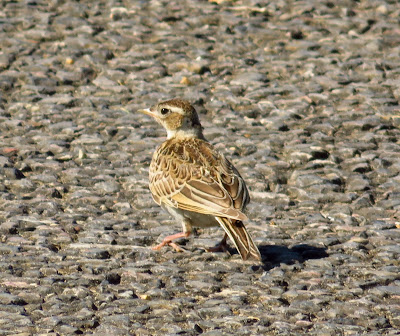Fourteen moth enthusiasts gathered at the country park for the annual summer mothing night. The get together was a joint Essex Moth Group and British Entomological & Natural History Society meeting. Eight moth traps / lamps were set up around the area of park close to the car park. Three traps continued till dawn and by that time the final tally of moths recorded for the night was about 95+ species of macro moth and at least 20 species of micro moth. A very rewarding night.
One of the target species was the spectacular garden tiger, the first individual arrived just after midnight with a second one being found in the trap at dawn.
It's great to see this colourful moth still present at the park as numbers have declined greatly nationally in recent years.
The most notable moth was this box-tree moth, a new record for the site and possibly the third record for north Essex. It is native to east Asia and has become recently established in southern England, the first individual in the UK being seen in Surrey in 2008. Since then the moth has been spreading across London and into the Home Counties. The caterpillars feed on box bushes and have become serious defoliators in parks and gardens. Luckily there's no box here at the country park.
The actual moth is quite an attractive one with slightly iridescent wings, and a large one too with a wingspan of 4 cms. Despite the large size, it's in the micro-moth group.
The actual moth is quite an attractive one with slightly iridescent wings, and a large one too with a wingspan of 4 cms. Despite the large size, it's in the micro-moth group.
Several of the colourful ruby tigers were found in a number of the traps - a widespread and common moth.
The rosy footman was one of the attractive moths with its salmon pink colouration and the black squiggle marks on the wings. There must be a small population at the park as there's only one or two individuals get seen each summer.
One of the biggest moths of the night was this oak eggar, a regular species to the trap each mid-summer period.
The festoon seems to have become established at the park following its big spread through Essex three years ago.
Another familiar resident is the tree-lichen beauty, also well established here for the last few years.
The nicely patterned archers dart is a regular at the park during mid-July to early August. It's distribution in Essex is limited to the area around the north-east coast of the county.
A moth becoming more widespread in the last few years is the Kent black arches with several being recorded at the park each year now.
Other moths noted at the park on Friday evening were saltmarsh plume, leopard, poplar hawkmoth, fen wainscot, one silver-Y, scarce silver-lines, green silver-lines, drinker, early thorn, green pug, maple pug, lackey, least carpet, lesser-spotted pinion, maple prominent, marbled white-spot, oak hook-tip, pebble hook-tip, peppered, plain pug, slender pug, V-pug, poplar grey and white satin.
Other moths noted at the park on Friday evening were saltmarsh plume, leopard, poplar hawkmoth, fen wainscot, one silver-Y, scarce silver-lines, green silver-lines, drinker, early thorn, green pug, maple pug, lackey, least carpet, lesser-spotted pinion, maple prominent, marbled white-spot, oak hook-tip, pebble hook-tip, peppered, plain pug, slender pug, V-pug, poplar grey and white satin.























































